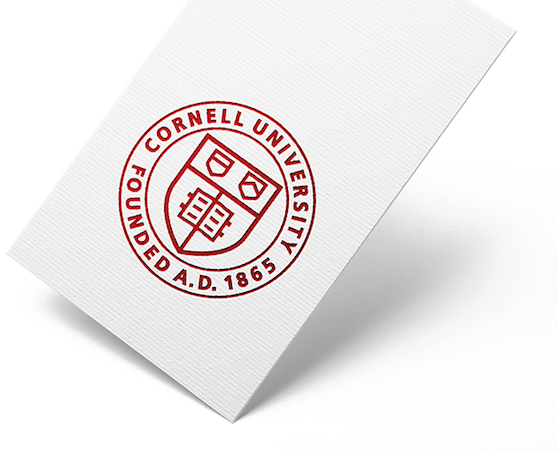Gilly Leshed is a senior lecturer in the Department of Information Science at Cornell. Her teaching and research interests are in Human-Computer Interaction (HCI) and Computer-Supported Cooperative Work (CSCW), in which she uses quantitative and qualitative methods and technology design to examine how individuals and groups accomplish tasks and socialize and the roles information technology plays in these interactions. She is particularly interested in designing interactive technologies that empower marginalized populations. Some of her works include visually-impaired users of social media, smallholder coffee farmers in Latin America, and Amazon Mechanical Turk workers. She is the Director of the Master of Professional Studies in Information Science, and is the faculty supervisor of the Design & Tech Initiative Project Team.

User Experience DesignCornell Certificate Program
Overview and Courses
With digital products on the rise, user experience design is fast becoming one of today’s most coveted careers.
This certificate program approaches UX and other forms of product design through human-centered design, the practice of placing users and their needs as the focus of the work. This includes everything from creating effective and enjoyable user experiences to ethical and safe interactions between the user research team and the product. The courses begin with the foundational concepts of good design: human-computer interaction, usability, user experience, and user research.
Beginning with understanding the user, you will plan and conduct user research to gain insights into real users; their backgrounds, goals, and behaviors. In the second stage of the design process, you’ll use your customer insights to develop scenarios and storyboards to formulate early visuals of the design concept. After gaining a firmer understanding of the design space, the physical visualizations begin to take shape as you lay out prototypes in the implementation stage. You’ll have the opportunity to use leading software tools to bring the design concept to fruition, gaining applied design skills in real-world UX, UI, and product design.
In the last course and the final stage of the human-centered design process, you will evaluate your design. This will involve planning and running a usability testing session with someone from the user group and reporting on the results. At the end of the certificate program, you’ll have a high-fidelity prototype which can be incorporated into your design portfolio to demonstrate an advanced representation of your UX design skills.
The courses in this certificate program are required to be completed in the order that they appear.
Course list
Human-computer interfaces have become a part of everyday life, whether we consider technology that we use at home or at work. People rely on technology to help them achieve a goal or solve a problem, and this idea is central to the emerging and rapidly expanding field of human-centered design: Who is using the interface, and for what purpose? How can we help them do that better? Answering these questions should be at the heart of the design process, as technologies are ultimately for people to use, and designers need to make this as intuitive and smooth as possible.
Design doesn't happen in a lab; it happens in the world, and gathering information about the users of your product ensures better design. In this course, you will be introduced to human-computer interaction design, use practical methods for applying sound design principles, and execute the entire process. You'll discover the basics of how to identify a human need, how and why you need to keep that need at the center of the design process, uncover what can be measured to improve the design, and ensure that you conduct your research fairly and ethically.
User-centered design does not start with the design, but rather with the users: Who are they? What are their goals? What do they need to achieve those goals? In what context will they be using your design? And how would a designer discover these things from the user base? Answering these questions requires a plan. Interviewing potential users in a controlled, systematic way helps to clarify their expectations and their requirements. Doing so helps to inform your design and make it better; no one wants to invest time, effort, and money into designing a solution no one will use.
In this course, you will examine best practices for planning and conducting interviews of potential users so that they yield the most insights. Over the course of the project, you will narrow down the target user group for your design, plan your interview, create meaningful and clear interview questions, and help ensure you can leave the interview sessions with the most useful insights.
The following course is required to be completed before taking this course:
- Human-Centered Design Essentials
After you have conducted interviews with your users, it is time to sift through your notes and transcripts in order to get at the most important insights; this is the data, which will be your guide to what the users actually need as well as what the design requirements ultimately need to be. However, one challenge we face as designers is that the data we have gathered is qualitative and not quantitative, which means that interpreting the data requires us to make associations and inferences as we read through the users' stories, thoughts, and feelings. Fortunately, we have several strategies for translating data into design requirements.
In this course, you will practice analyzing data from your user interviews and identify insights that are not always immediately apparent. After you extract insights from your interview data, you will create a fictitious user called a persona that will serve as a model of your users and help guide your design decisions. Finally, you will create design requirements that will help as you move from explaining the current state of your users to imagining a future where they use your design to better meet their needs.
The following courses are required to be completed before taking this course:
- Human-Centered Design Essentials
- Effective User Research
When designing a product, we must always consider the experience that the user will have while interacting with it, and we do this by visually sketching the product and our vision of how a user would interact with it. A pen-and-paper sketch helps us to conceptualize abstract design ideas more effectively, communicate these ideas to others, and get feedback. Regardless of your artistic skills, you can effectively, quickly, and inexpensively communicate design ideas by sketching; it is much faster (and cheaper) to modify or throw away a pen-and-paper sketch than a full prototype.
In this course, you will learn numerous techniques to improve your sketching skills in order to more clearly convey your design ideas and improve your design. In your course project, you will sketch many design ideas so that you can explore alternative ways of meeting the user requirements. You will also create a design concept based on one of those sketches, then expand the idea into a full scenario and storyboard of the user completing several tasks. Additionally, you will develop a user interface design concept to better envision how your users will actually interact with your design. Finally, you will update your sketches to better fit your user's mental model, as a designer's concept of the design doesn't always match with how a user thinks about it.
The following courses are required to be completed before taking this course:
- Human-Centered Design Essentials
- Effective User Research
- Creating User Personas
Designers know the power of making improvements based on feedback. As you have seen already, this leads to much stronger designs in the end, but it also helps control costs, as it is far easier (and faster) to make necessary changes to sketches or storyboards than full-featured versions. Eventually, however, your design reaches the point where it needs to be a fully fleshed-out interface with which your users can interact. This is where prototypes come in, to further develop the user interface, examine design decisions and interaction flows, and gather feedback. There are several different considerations and decisions to make when creating prototypes based on what you want to get feedback on, how much you need to develop the interface, and the resources available to you.
In this course, you will create three different interactive prototypes for your design concept: a paper prototype, a medium-fidelity software prototype, and a high-fidelity software prototype. You will also make iterative improvements to your prototypes using rapid evaluation methods, relying on different design principles and heuristics. Throughout this course, you will gain valuable experience working with two prototyping software applications (Balsamiq and Figma), and you will continue to iterate with each prototyping technique toward a more developed user interface design.
The following courses are required to be completed before taking this course:
- Human-Centered Design Essentials
- Effective User Research
- Creating User Personas
- Developing a UX Design Concept
After interviewing users, gathering requirements, creating a design concept, and creating and iterating interactive prototypes, it is time for the final stage of the human-centered design process: conducting an evaluation of the usability of your design. At this stage, we examine the interaction between the user and the interactive prototype to find out what improvements are needed in order for the design to achieve its goals. We do so by observing users as they interact with the prototype to complete tasks. While we often use a high-fidelity prototype at this stage, we must resist the tendency to consider the design as close to "done," as this stage of the process is still iterative. In order to get useful feedback and make the product better, we must carefully plan and conduct a usability test session, listen to the users, and make changes in response to design flaws that we find.
In this course, you will create a usability test plan, including defining its goals and any metrics you will want to use for your usability tests. Based on that, you will create a usability test protocol by choosing tasks and composing task instructions for your users to follow. You will then recruit a participant to run a usability test session with your high-fidelity prototype and form a plan for what changes you will make to improve your design.
The following courses are required to be completed before taking this course:
- Human-Centered Design Essentials
- Effective User Research
- Creating User Personas
- Developing a UX Design Concept
- Prototyping and UX Feedback
How It Works
- View slide #1
- View slide #2
- View slide #3
- View slide #4
- View slide #5
- View slide #6
- View slide #7
- View slide #8
- View slide #9
Faculty Author
Key Course Takeaways
- Master key UX and human-centered design concepts for understanding users, analyzing design, employing user research practices, and iterating design concepts
- Plan and conduct contextual interviews
- Extract insights from interview data to create user personas and design requirements
- Create a UX design concept using sketches, user scenarios, and storyboards
- Design an interactive high-fidelity UX prototype
- Plan, develop, and conduct usability testing to inform future design iterations

Download a Brochure
Not ready to enroll but want to learn more? Download the certificate brochure to review program details.
What You'll Earn
- User Experience Design Certificate from Cornell Ann S. Bowers College of Computing and Information Science
- 108 Professional Development Hours (10.8 CEUs)
- 60 Professional Development Units (PDUs) toward PMI recertification
Watch the Video
Who Should Enroll
- Product managers
- Web designers
- Software developers
- Marketing professionals
- UI/UX designers
- Graphic designers
- Instructional designers
- Accessibility specialists
- Anyone focused on customer experience evaluation

“eCornell gave me the confidence I needed to take a seat at the table and say: I’m ready.”
“I received my User Experience Design Certificate from Cornell and shortly after finishing my studies, I was hired at a leading bank – as a member of their UX design team. I think that speaks for itself. Getting into the program at Cornell was the key to kick-starting my career again and putting me back on the right track – and I’m most grateful for that.”
- View testimonial #1
- View testimonial #2
Request Information Now by completing the form below.

User Experience Design
| Select Payment Method | Cost |
|---|---|
| $3,750 | |

